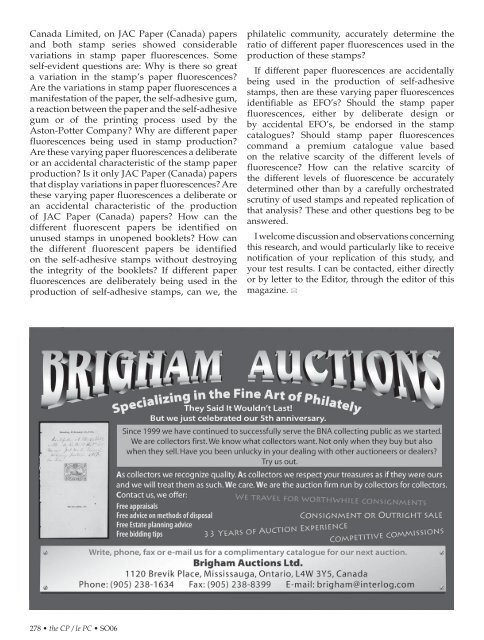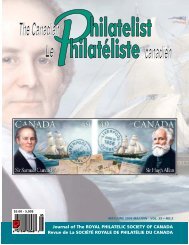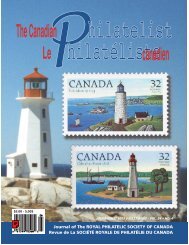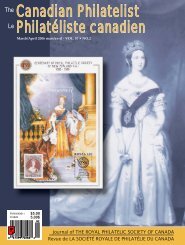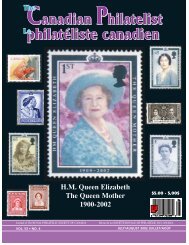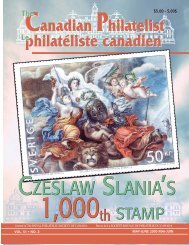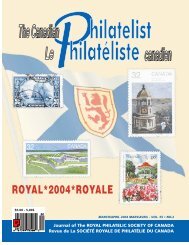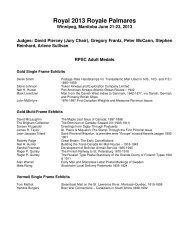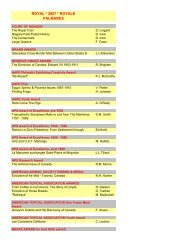Canadian Philatelist Philatéliste canadien - The Royal Philatelic ...
Canadian Philatelist Philatéliste canadien - The Royal Philatelic ...
Canadian Philatelist Philatéliste canadien - The Royal Philatelic ...
You also want an ePaper? Increase the reach of your titles
YUMPU automatically turns print PDFs into web optimized ePapers that Google loves.
Canada Limited, on JAC Paper (Canada) papers<br />
and both stamp series showed considerable<br />
variations in stamp paper fluorescences. Some<br />
self-evident questions are: Why is there so great<br />
a variation in the stamp’s paper fluorescences?<br />
Are the variations in stamp paper fluorescences a<br />
manifestation of the paper, the self-adhesive gum,<br />
a reaction between the paper and the self-adhesive<br />
gum or of the printing process used by the<br />
Aston-Potter Company? Why are different paper<br />
fluorescences being used in stamp production?<br />
Are these varying paper fluorescences a deliberate<br />
or an accidental characteristic of the stamp paper<br />
production? Is it only JAC Paper (Canada) papers<br />
that display variations in paper fluorescences? Are<br />
these varying paper fluorescences a deliberate or<br />
an accidental characteristic of the production<br />
of JAC Paper (Canada) papers? How can the<br />
different fluorescent papers be identified on<br />
unused stamps in unopened booklets? How can<br />
the different fluorescent papers be identified<br />
on the self-adhesive stamps without destroying<br />
the integrity of the booklets? If different paper<br />
fluorescences are deliberately being used in the<br />
production of self-adhesive stamps, can we, the<br />
philatelic community, accurately determine the<br />
ratio of different paper fluorescences used in the<br />
production of these stamps?<br />
If different paper fluorescences are accidentally<br />
being used in the production of self-adhesive<br />
stamps, then are these varying paper fluorescences<br />
identifiable as EFO’s? Should the stamp paper<br />
fluorescences, either by deliberate design or<br />
by accidental EFO’s, be endorsed in the stamp<br />
catalogues? Should stamp paper fluorescences<br />
command a premium catalogue value based<br />
on the relative scarcity of the different levels of<br />
fluorescence? How can the relative scarcity of<br />
the different levels of fluorescence be accurately<br />
determined other than by a carefully orchestrated<br />
scrutiny of used stamps and repeated replication of<br />
that analysis? <strong>The</strong>se and other questions beg to be<br />
answered.<br />
I welcome discussion and observations concerning<br />
this research, and would particularly like to receive<br />
notification of your replication of this study, and<br />
your test results. I can be contacted, either directly<br />
or by letter to the Editor, through the editor of this<br />
magazine. *<br />
278 • the CP / le PC • SO06


